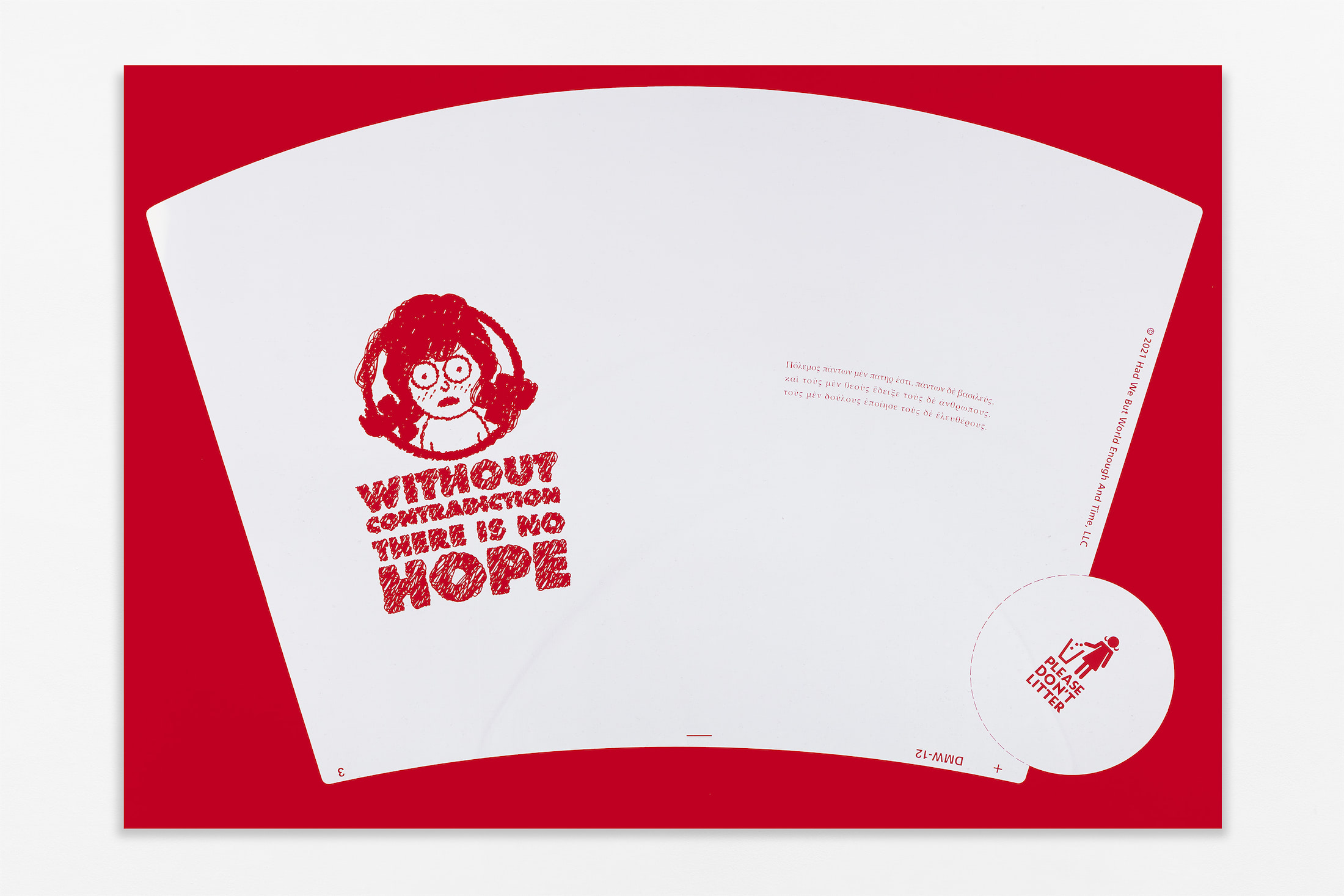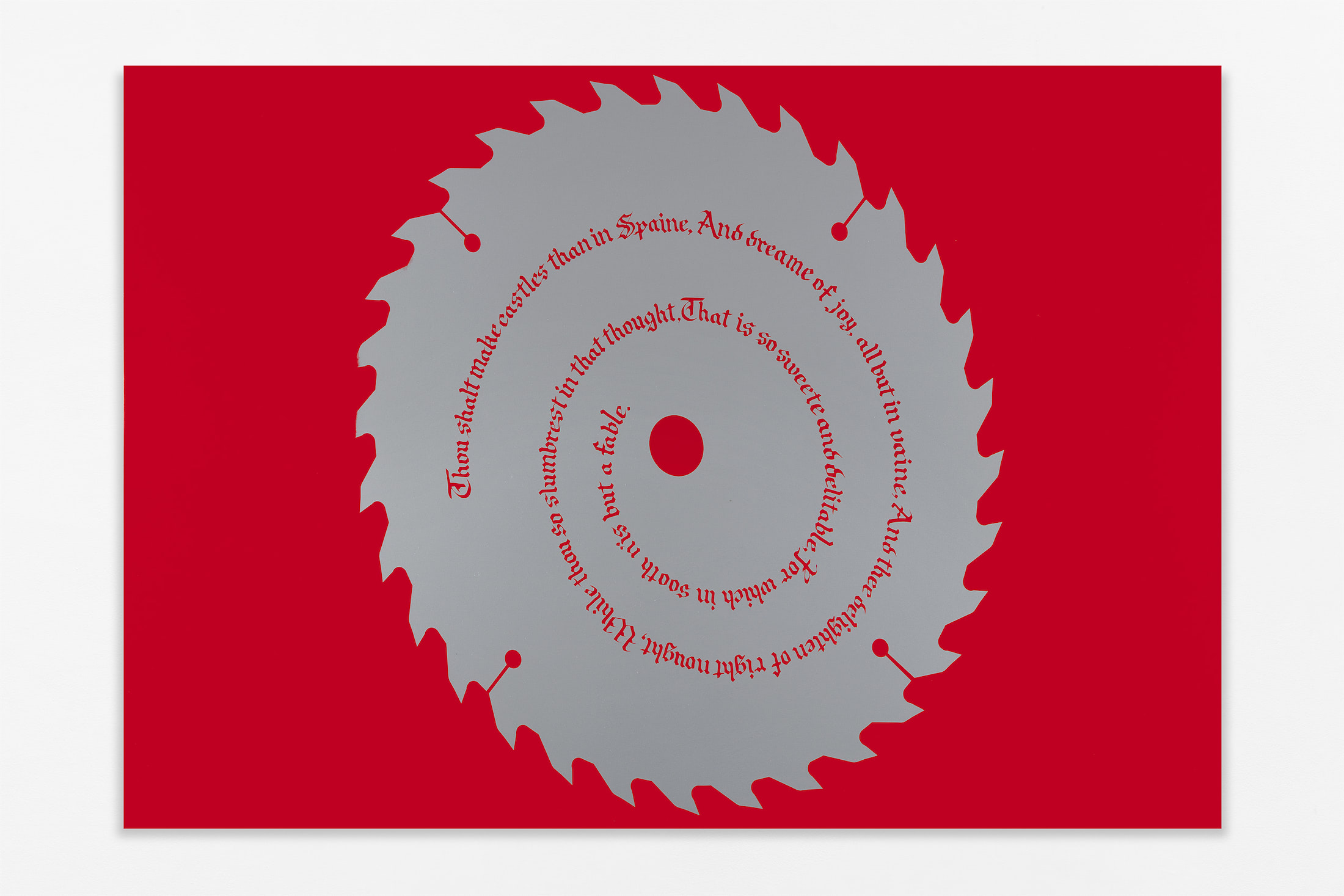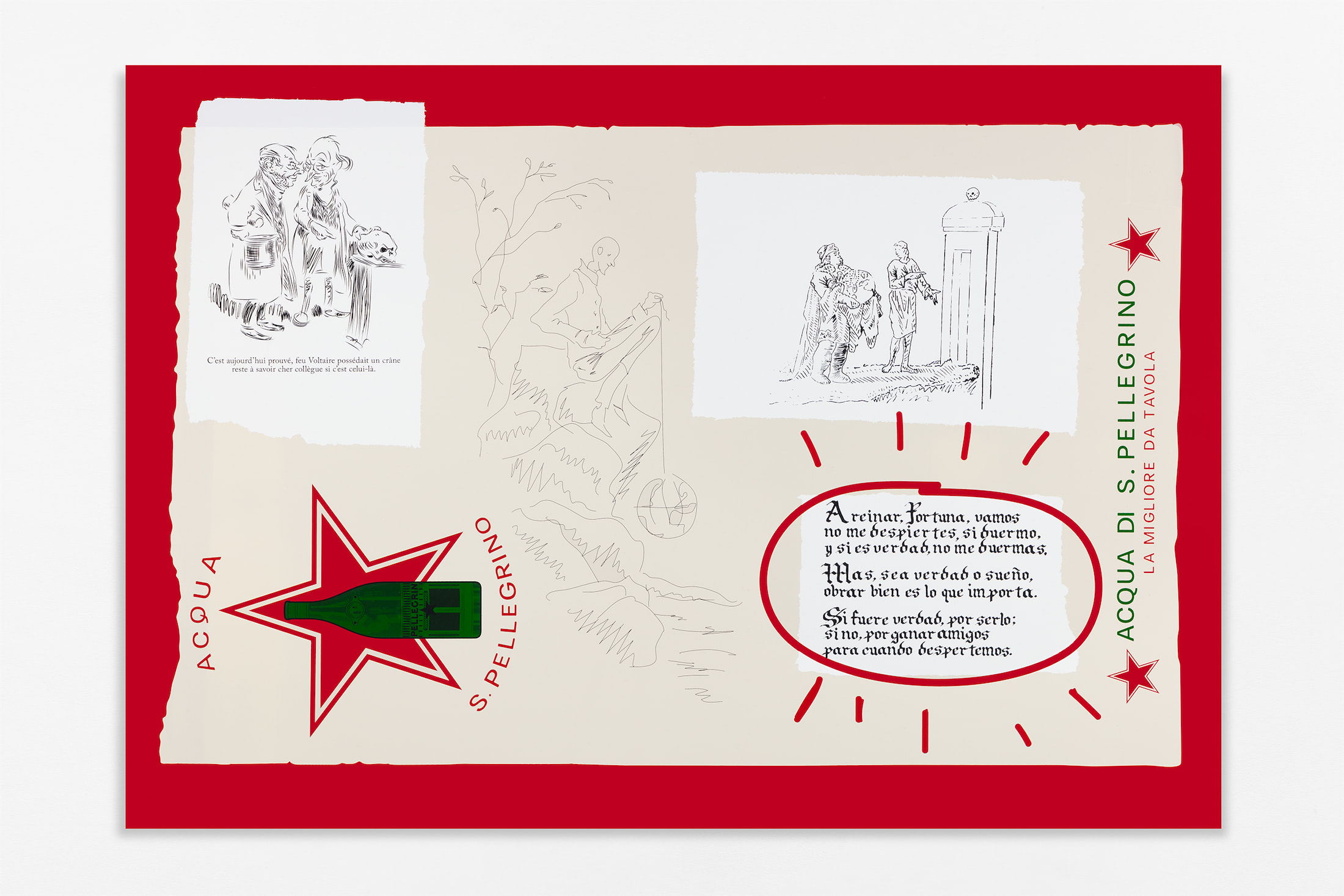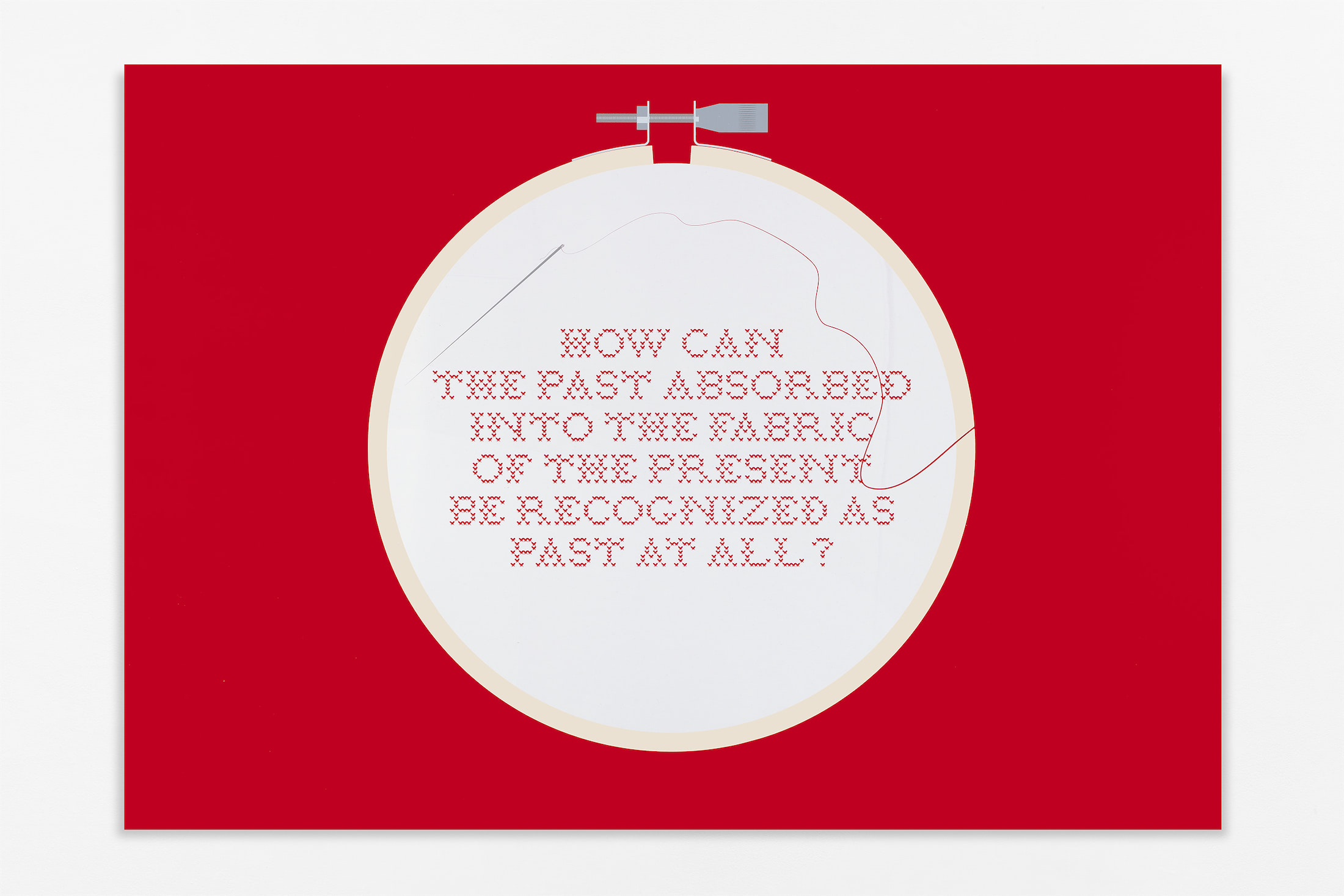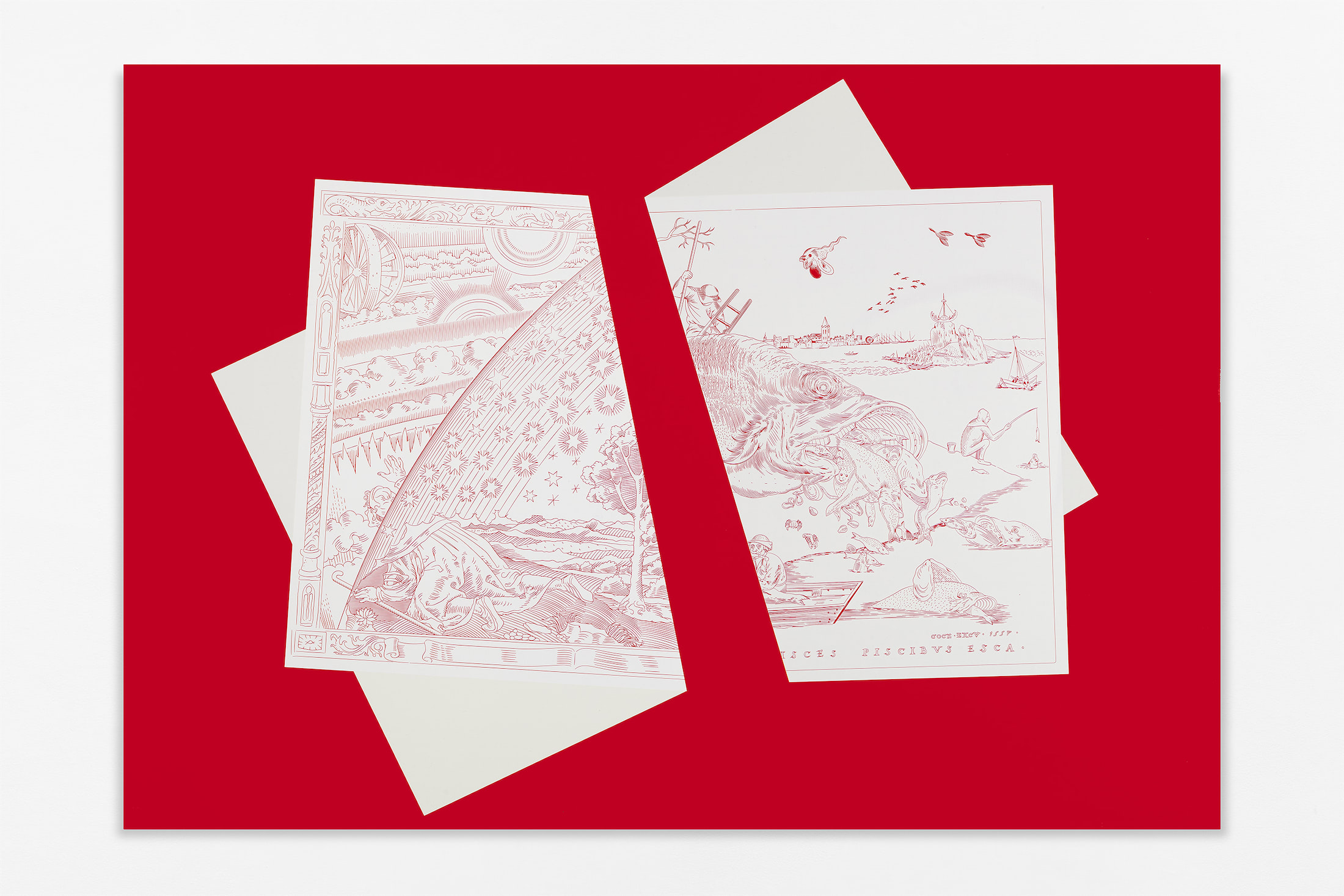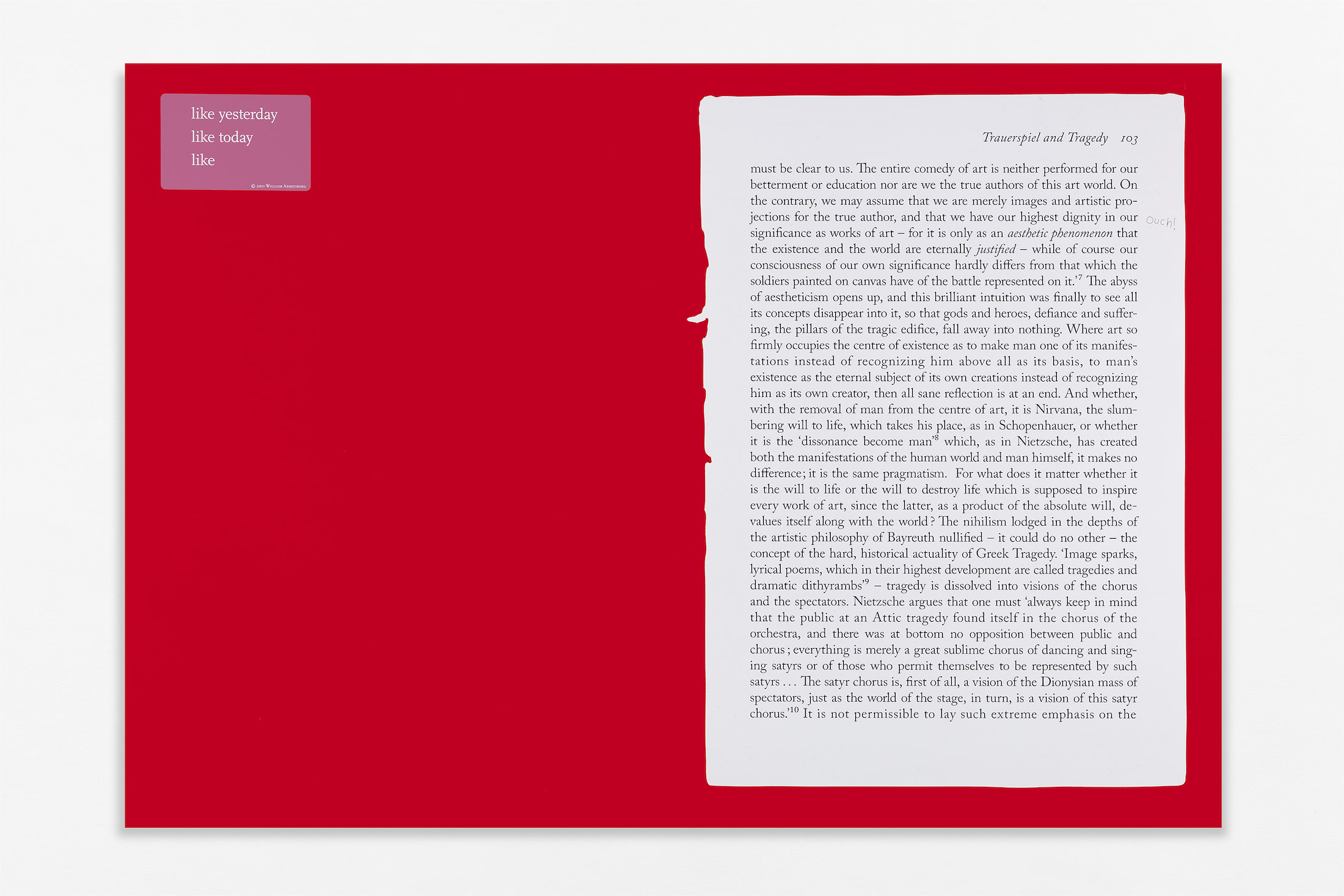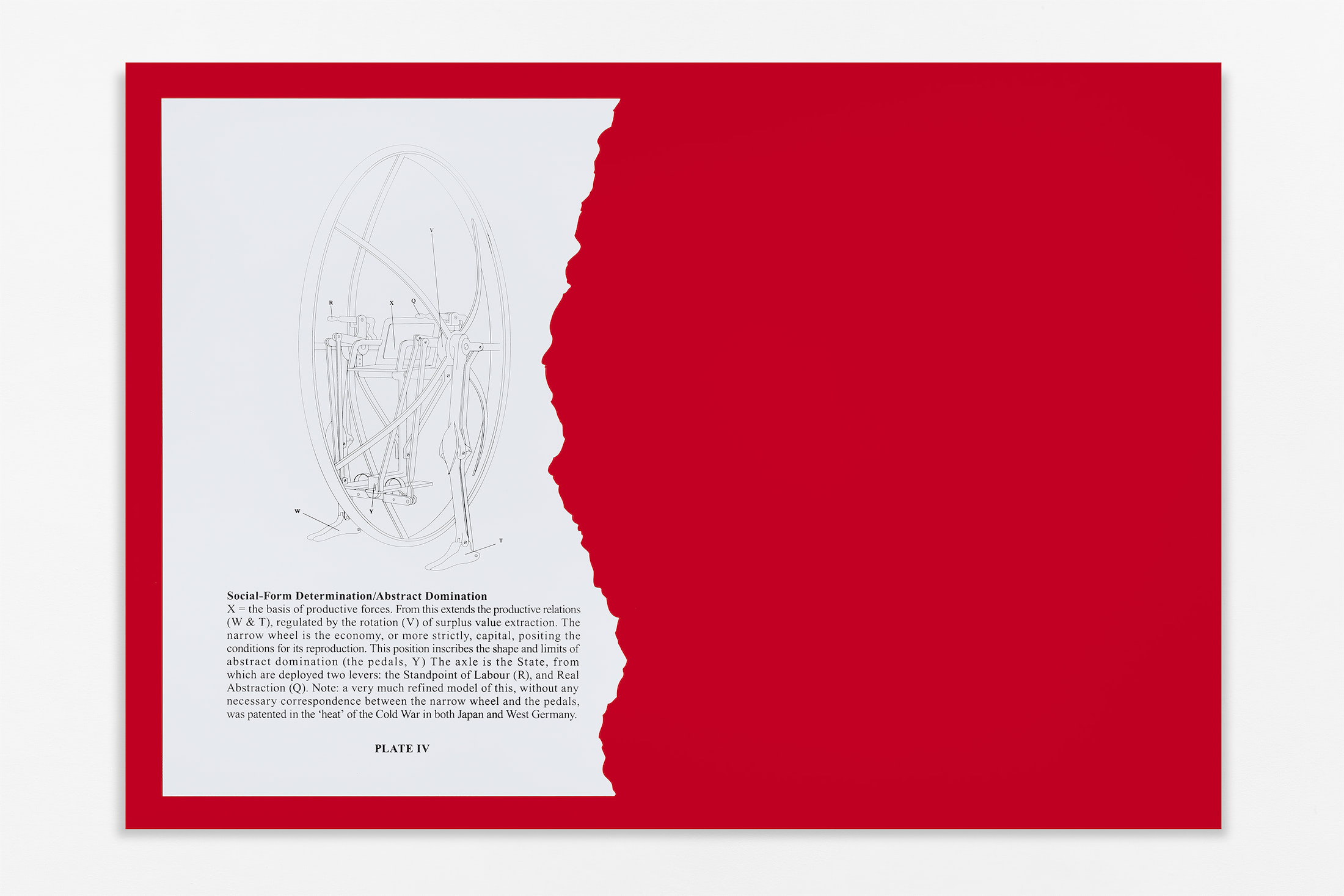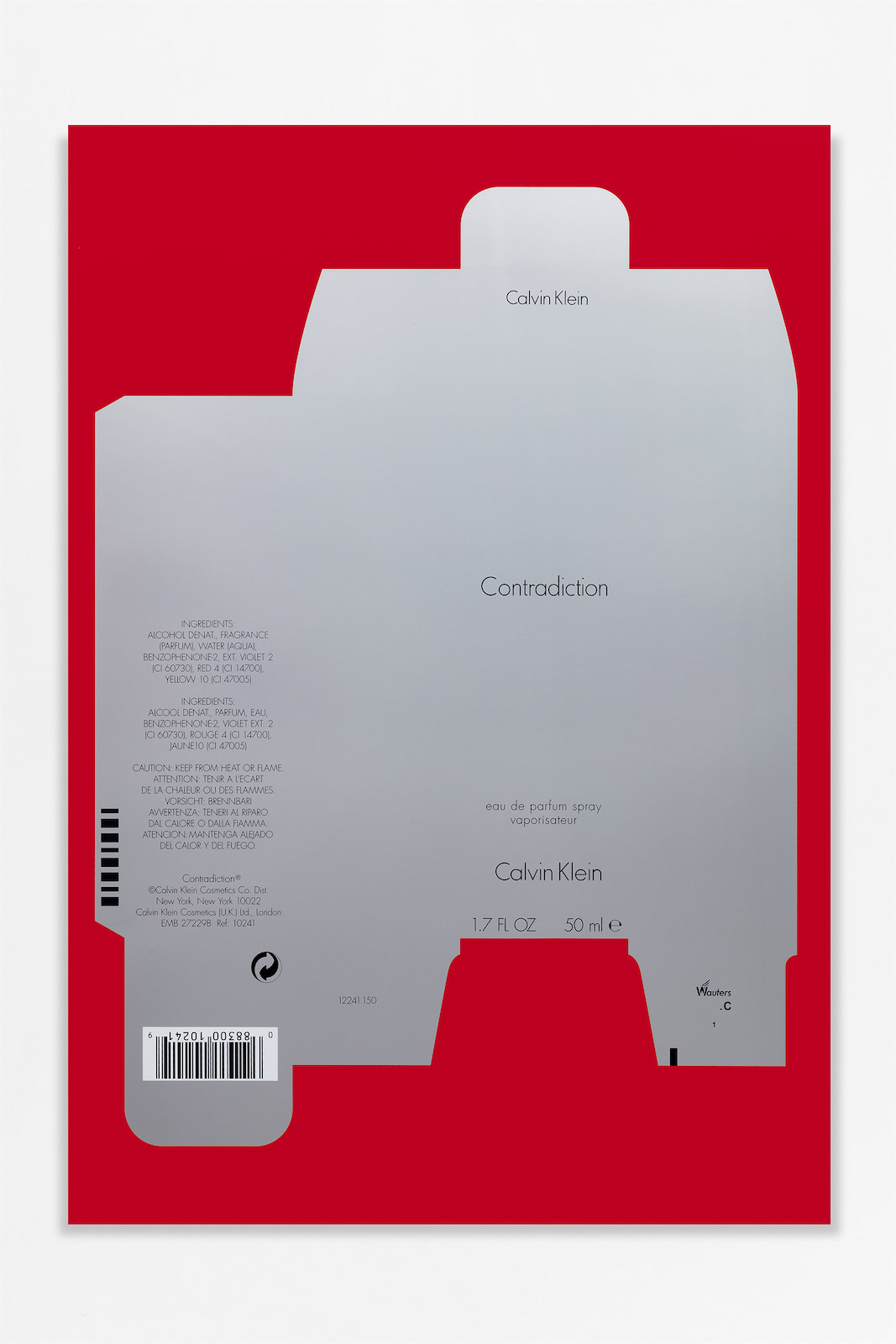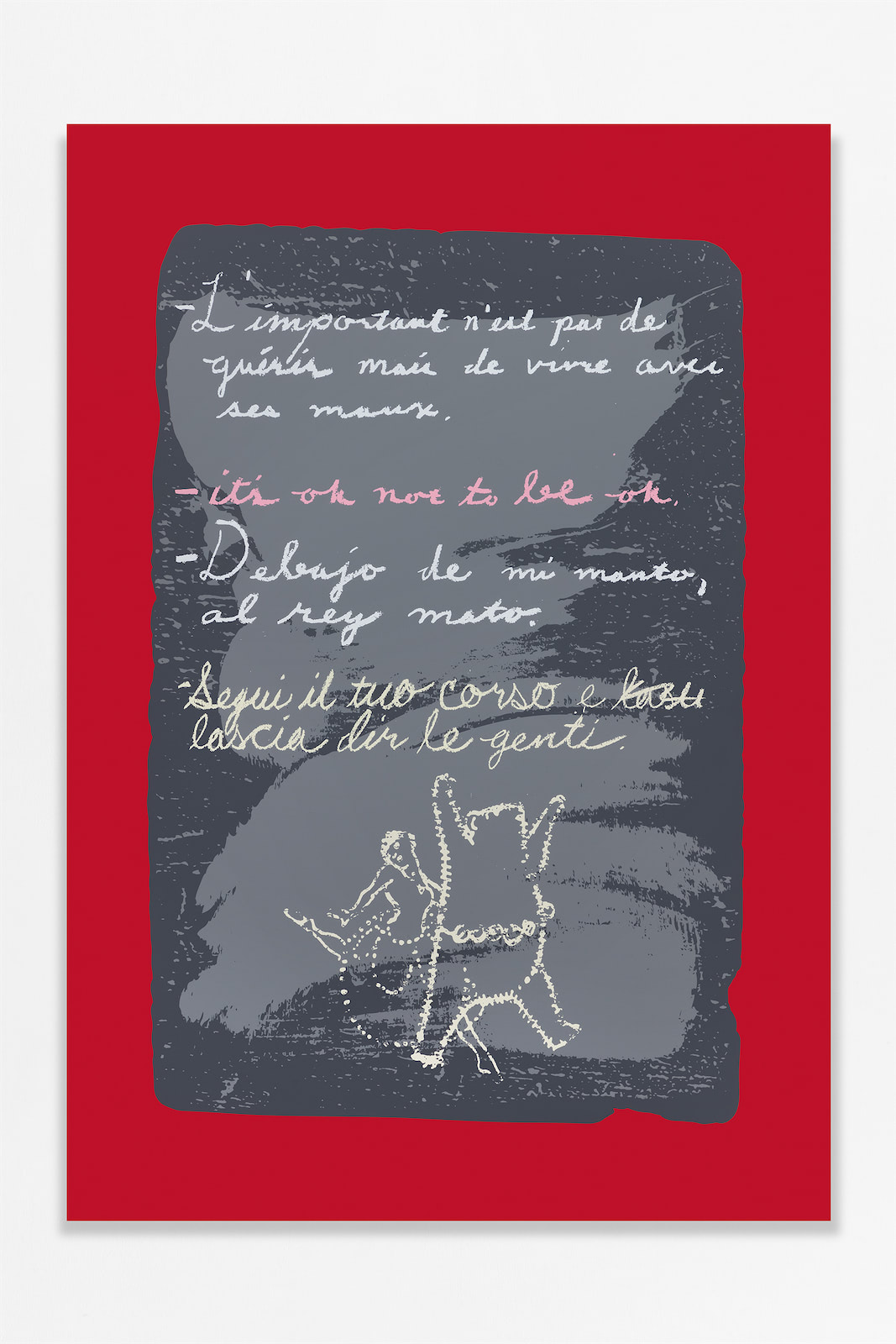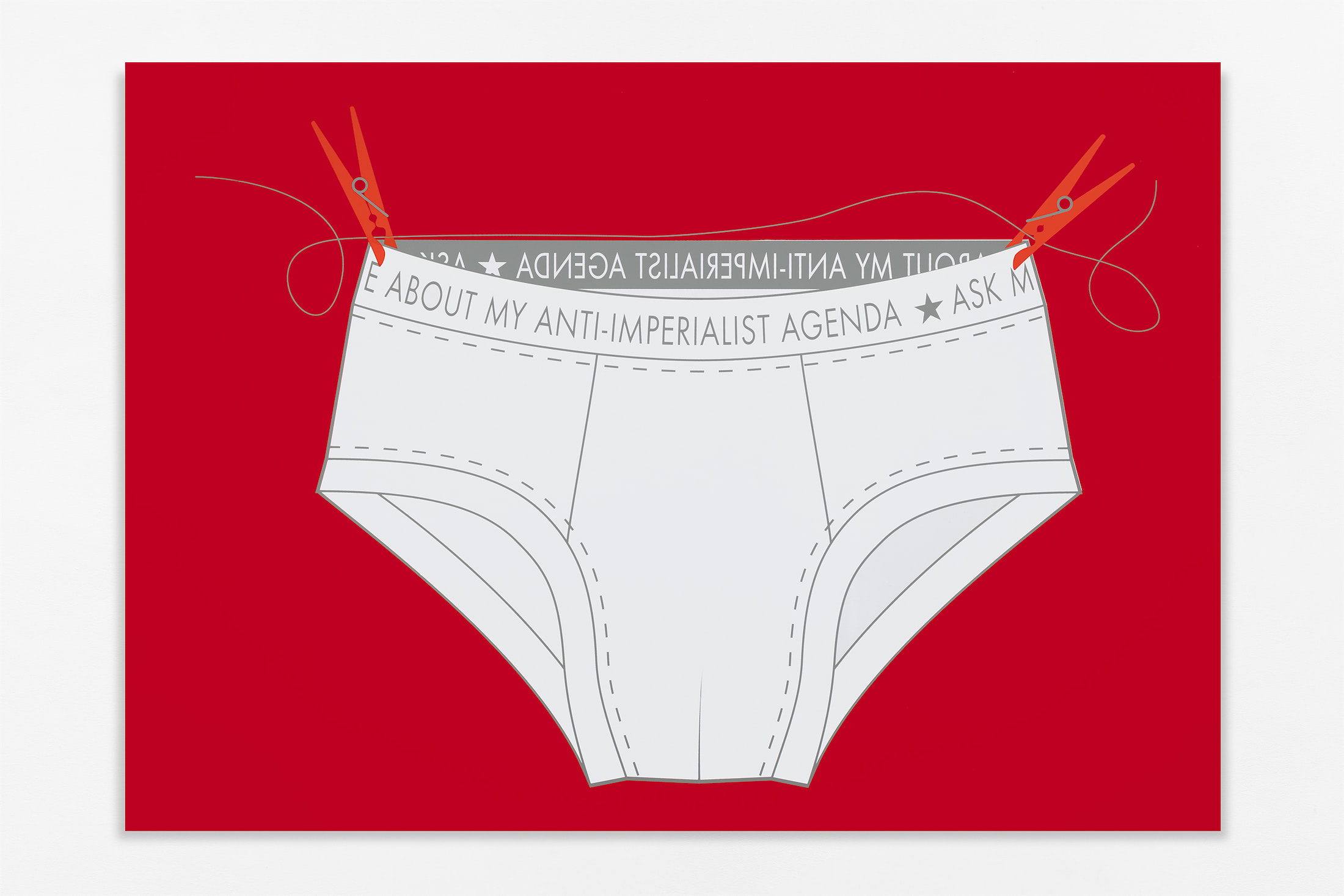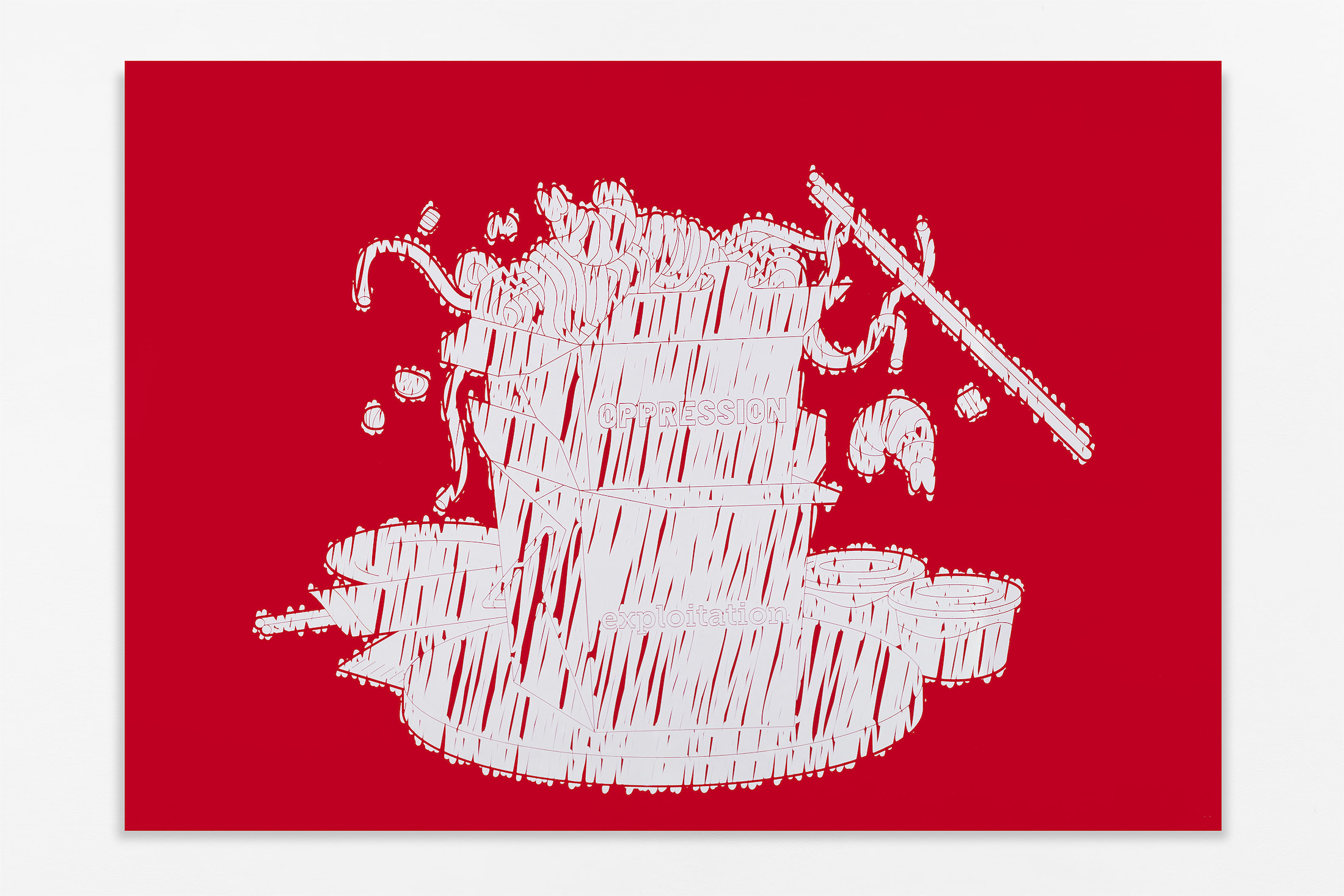Sam Pulitzer
13 noviembre 2021- 15 enero 2022Gaga se complace en presentar Кризис Безобразия, la tercer muestra de Sam Pulitzer en la galería.
Esta exposición consta de 13 obras gráficas presentadas bajo el título en ruso, Кризис Безобразия. Cuando se traduce al idioma español, la frase significa "Crisis de fealdad". Está extraído de una serie de ensayos escritos por el filósofo estético soviético Mikhail Lifshitz, colega de György Lukács, en el agitado año de 1968. Lifshitz desarrolla la crítica de Georgy Plekhanov del salón de otoño de 1912 como una "crise de la laideur", un juicio que toma prestada la evaluación negativa anterior del crítico Camille Mauclair de los logros artísticos de los fauvistas, en una filípica contra las fortunas históricas del cubismo y el arte pop. El beneficio de mantener el título en ruso es la riqueza de Безобразия, que tiene un matiz mayor que la mera indignación que transmiten tanto "fealdad" como "laideur". Desglosado en Без y образия, sugiere una “falta de imagen” de dimensiones éticas en un sentido más cercano al término teológico alemán, Bildlosigkeit. (Nota: estoy parafraseando la discusión del traductor David Riff sobre el texto de Lifshitz).
En el ensayo, "Mito y realidad: la leyenda del cubismo", Lifshitz afirma que, si bien constituye "una protesta [que refleja] la presencia de un gran estrato de personas hambrientas de ver un cielo nuevo y una tierra nueva", el cubismo está atemperado por un déficit social en el que, “en lugar de luchar por cambiar las formas reales del proceso en curso de la vida, [el cubista] rompe las formas en las que se percibe”. A favor de una teoría del realismo de la que era partidario, Lifshitz opina además:
Todo el linaje de representar la realidad en sus formas visibles, y especialmente en las formas de vida como base de lo bello, es inaceptable para quienes adoran el reino de los muertos. [...] La cuestión de la verdad se deja de lado por completo. 'Todos sabemos', dijo el propio Picasso, 'que el arte no es la verdad'. El cubismo crea conscientemente combinaciones de formas sin precedentes sin garantizar que se parezcan a nada en nuestro mundo ordinario y pecaminoso o incluso en el reino de otro mundo de la forma pura. "El arte es una mentira". "Esas mentiras son necesarias para nuestro yo mental".
Naturalmente, una "crisis" de este tipo —uno estaría en apuros para afirmar que el rechazo de Lifshitz de la modernidad estética del Atlántico Norte como algo más que polémico— no solo ha pasado de moda, sino que ha perdido el favor histórico. La guerra de posiciones entre una constelación de, más o menos, la modernidad estética y la tradición política contra la de otra se ha resuelto sin ceremonias en un programa social de terapia de choque mucho más antiestético que las latas de sopa Campbell que llegaron a servir como el modelo unidimensional emblemas de un sueño universal realizado. Pero eso también fue hace muchos auges y caídas; tanto es así, que tal recuerdo en sí mismo parece una distracción patológica para una sociedad contemporánea que es tan piadosa en su abrazo a la novedad como novedoso en su abrazo a la piedad.
Las obras gráficas reunidas bajo un título tan pesado fueron producidas en el más allá de un estado de cosas tan anticuado, ya que se entregan a un presente aparentemente libre de cualquier obligación práctica con lo histórico más allá de la revisión. Como imágenes, representan, en un formato de póster estándar y sobre un fondo rojo monótono, objetos discretos que se han modificado de una forma u otra para que puedan comunicar a un observador desinteresado que representan mucho más de lo que son, aunque , en verdad, son sólo eso. Si el reino de los muertos se ubicara en algún lugar entre el ático de un familiar y una casa de subastas, ignorando por un momento los mortuorios que marcan la historia, estos detritos visuales se encontrarían al acecho de la redención como aureolas del destino roto.
Sam Pulitzer
November 13th, 2021- January 15th, 2022Gaga is pleased to present Кризис Безобразия, Sam Pulitzer’s third show at the gallery.
This exhibition consists of 13 graphic works presented under the Russian-language title, Кризис Безобразия. When translated into the English language, the phrase means “Crisis of Ugliness.” It is taken from a set of essays written by Soviet aesthetic philosopher Mikhail Lifshitz, a colleague of György Lukács, in the eventful year of 1968. Lifshitz develops Georgy Plekhanov’s critique of 1912’s salon d’automne as a “crise de la laideur,” a judgement which borrows critic Camille Mauclair’s earlier negative assessment of the Fauves’ artistic achievement, into a philippic against the historical fortunes of Cubism and Pop Art. The benefit of keeping the title in Russian is the richness of Безобразия which bears greater nuance than the mere unsightliness that both ‘ugliness’ or ‘laideur’ convey. Broken down into Без and образия, it suggests an “image-lessness” of ethical dimensions in a sense closer to the German theological term, Bildlosigkeit. (Note: I am paraphrasing translator David Riff’s discussion of Lifshitz’s text.)
In the essay, “Myth and Reality: The Legend of Cubism,” Lifshitz’s claims that, while it constitutes “a protest [that reflects] the presence of a huge stratum of people hungry to see a new heaven and a new earth,” Cubism is tempered by a social deficit in which, “instead of fighting to change the real forms of life’s ongoing process, [the cubist] breaks the forms in which it is perceived.” In favor of a theory of realism of which he was a partisan, Lifshitz further opines—
The entire lineage of depicting reality in its visible forms, and especially in forms of life as the basis of the beautiful, is unacceptable to those who worship the kingdom of the dead. [...] The question of truth is cast aside entirely. ‘We all know’, said Picasso himself, ‘that Art is not truth.’ Cubism consciously creates unprecedented combinations of form without guaranteeing that they will resemble anything at all in our ordinary, sinful world or even in the otherworldly realm of pure form. ‘Art is a lie’. ‘Those lies are necessary for our mental selves’.
Naturally, such a “crisis”—one would be hard-pressed to claim that Lifshitz’s dismissal of North Atlantic aesthetic modernity as anything other than polemic—has fallen not only out of fashion but out of historical favor. The war of position between one constellation of, give or take, aesthetic modernity and political tradition against that of another has been unceremoniously settled in a social program of shock therapy far more unsightly than the Campbell soup cans that came to serve as the one-dimensional emblems of a universal dream realized. But, that, too, was many booms and busts ago; so much so, that such a memory itself seems a pathological distraction for a contemporary society that is as pious in its embrace of novelty as it is novel in its embrace of piety.
The graphic works gathered under such a weighty title were produced in the afterlife of such an antiquated state of affairs as they are delivered into a present ostensibly free of any practical obligation to the historical beyond revision. As images, they depict, in a standard poster format and against a monotone red background, discrete objects that have been modified in one way or another so that they might communicate to a disinterested observer that they represent much more than what they are—even though, in truth, they are only just so. If the kingdom of the dead were located somewhere between a relative’s attic and an auction house, ignoring for a moment the charnel houses that punctuate history, this visual detritus would be found laying in wait for redemption as aureoles of broken fate.









